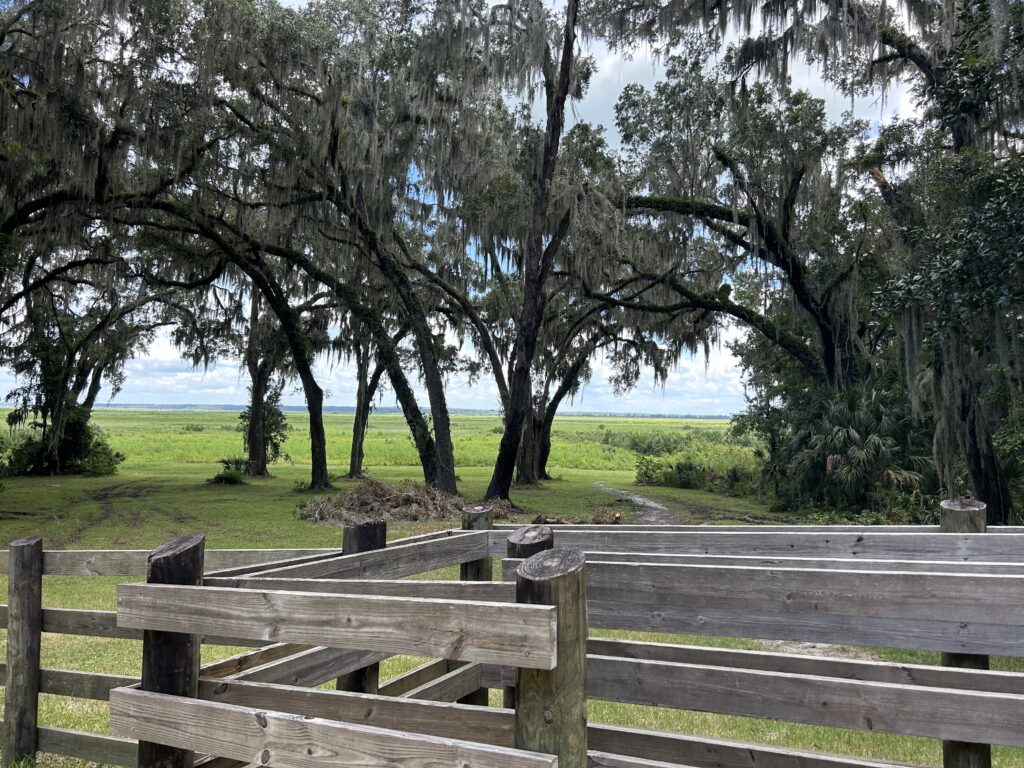
Anna Bialkowski
Staff Writer
A few weeks ago, I had the pleasure of traveling up to Gainesville to visit a close friend of mine and past Editor-in-Chief, Emma Poole. We went on a pretty ambitious five mile expedition in search of the illustrious wild bison that live in the Paynes Prairie State Park, the last wild herd in the state of Florida. We were observed by a deer hiding in the shade under some wild oak trees, and were constantly bombarded by swarms of flies, grasshoppers and mysterious buzzing sounds. Our shoes got soaked in mud, and sweat glistened on our faces. Although we did not get the opportunity to see any wild bison or horses, I am still so thankful for being able to explore a Florida State Park.
Recent decisions regarding the Great Outdoors Initiative have caused Americans to worry about the future of Florida’s state parks. Worry and distress that hotels would dominate the natural ecosystems was a common thread on social media, and many people held that belief about the initiative. However, it appears that the initiative had a different intention.
“I heard that they were trying to put golf courses and pickleball courts on protected land … My environmental teacher was upset about it because we already don’t have that much protected land,” biology student Reese Laird said.
With all of the outrage that has surrounded this initiative, there is a deep misunderstanding surrounding the issue. Although this executive order was thrust into the hands of Sen. Ron Desantis, the Great Outdoors Initiative has been in the works for over a decade. Online records referencing the order go as far back as 2011, when it was originally proposed by then President Barack Obama. According to an Oct. 2023 news release, DeSantis announced that this initiative was meant to “encourage Floridians to go outdoors and explore Florida’s natural resources, including our award-winning state parks, vast recreation areas, and world-renowned waterways.” This would also give way to discounted prices on tickets for families and annual state park passes or for those wishing to obtain a fishing or hunting license. Within this news release, there is no mention of developing hotels, golf courses, or any such industrial developments.
In a press release from the Florida Department of Environmental Protection, the goals of the initiative included, “expand public access, increase outdoor activities and provide new lodging options across Florida’s state parks; reinforcing the state’s dedication to conservation, the outdoor recreation economy and a high quality of life for Floridians.”
FSC biology professor Dr. Lauren Griffiths says that from her perspective, there is nothing inherently wrong with wanting to bring people to state parks, and that while there might not be any malicious intent, the ecological viewpoint is still a point of contention.
“Going in and removing some of those natural ecosystems is something that I think is often overlooked when we look at trying to add in more mix use applications,” Griffiths said.
While lodging in a state park might seem counterproductive to the integrity of the initiative, I do not think that any assumptions should be made without looking at blueprints or plans. Some infrastructure could bring more awareness to the state parks.
For instance, the visitor center at the Paynes Prairie State Park was nestled naturally into the park, and actually helped give some perspective on the wildlife that could be seen there. A visitor center is not the same thing as a pickleball court, or lodging for people to stay at, but it is still a man-made building that ultimately helps give people information and draws in engagement.
Structures added to state parks should exist to enhance the experience of the park itself. For example, a disc golf course is not very damaging to the integrity of the nature around the park. Pickleball courts are different, though, since they require more space to be cleared and are made with asphalt. In terms of lodging, with the right amount of careful precision and respect for surrounding land, it wouldn’t be much different from making a visitor center. The incentive of bringing in families could work, as long as the building is not infringing on the local ecosystem.
“The purpose of state parks is for the people of Florida to be able to use them and we can’t expect everybody to want to go out to them if all we’re giving them is hiking land,” Griffiths said.
Bahia Honda State Park located in Big Pine Key, Florida, is an example Griffiths uses to illustrate that there are several amenities and cabins that function as semi-resorts. However, it is integrated in a way that upholds the integrity of the nature of the park.
Putting down an excessive amount of human infrastructure won’t increase awareness, but integrating something to enhance the experience of the land certainly could.
Moving forward with issues like this, doing the appropriate research can help guide people in the right direction and find out what is really going on.
“Don’t just take what you’re given as fact,” Griffiths said. “With that, a lot of the nuance gets lost; we lose this ability to recognize that there is another side of this.”
